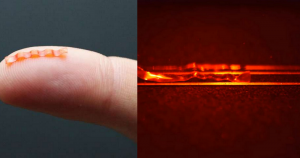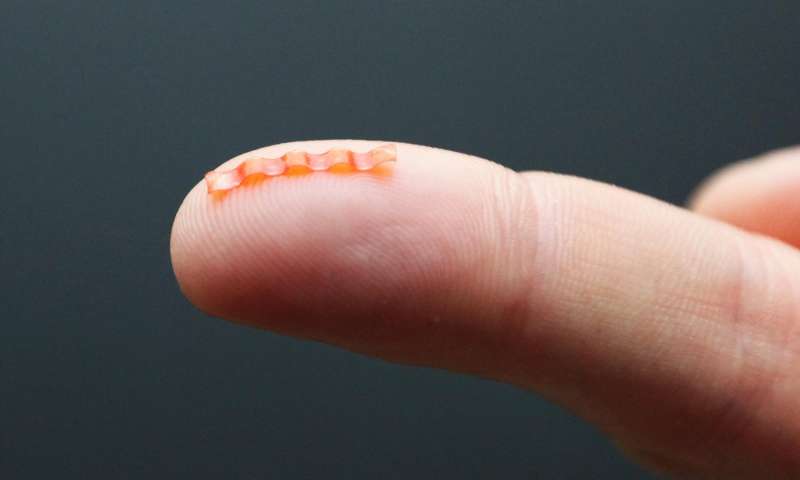
Watch This Breathtaking Video Of Tiny light-powered Caterpillar Robot Which Mimics Natural Crawl
Researchers from the University of Warsaw in Poland have developed a tiny light-powered soft-bodied caterpillar robot, which is capable of mimicking the natural wavelike crawling motion and can scoot along flat surfaces and moderate slopes.

This new caterpillar-like robot that can mimic movements of the worm and climb trees, slopes, squeeze through narrow slits and transport loads in a similar fashion – is just 15-millimetre long and gets energy from modulated laser beam which emits green light. The researchers used the liquid crystal elastomer technology originally developed in the LENS Institute in Florence, to develop the soft robot.
Since decades, researchers have been trying to build robots mimicking different modes of locomotion found in nature. Most of these designs have rigid skeletons and joints driven by electric or pneumatic actuators like dogs, cheetah, etc.
However, a vast number of animals including snails, caterpillars, and earthworms move their body using soft tissues as they don’t have bones. These soft body organisms have developed their own technique of locomotion which is way different than other animals with rigid skeletons.
The previous attempts of scientists to create soft robots were limited to a larger scale (typically tens of centimeters), mainly due to difficulties in power management and remote control.
To overcome those previous problems, researchers, this time, used Liquid Crystalline Elastomers (LCEs). LCEs are smart materials that can change their shape when exposed to visible light.
Recent advancement in technology has enabled scientists to pattern these soft materials into arbitrary three-dimensional forms with a pre-defined actuation performance. The light-induced deformation allows a monolithic LCE structure to perform complex actions without numerous discrete actuators.
Harnessing the power of LCEs, researchers were able to develop a natural-scale soft caterpillar-like robot which has soft tissues and can mimic the locomotion of caterpillar itself. The robot body is made of a light-sensitive elastomer stripe with patterned molecular alignment. By controlling the travelling deformation pattern, the robot mimics different gaits of its natural relatives. It can also climb a tree, slide on a slope, change its shape and push objects as heavy as ten times of its own weight, demonstrating its ability to perform in challenging environments and pointing at potential future applications.
“Designing soft robots calls for a completely new paradigm in their mechanics, power supply and control. We are only beginning to learn from nature and shift our design approaches towards these that emerged in natural evolution,” said Piotr Wasylczyk from the University of Warsaw, who led the project.
Check out the light-powered caterpillar robot in action in the video below:
Researchers hope that rethinking materials, fabrication techniques, and design strategies should open up new areas of soft robotics in micro- and millimetre length scales, including swimmers (both on surface and underwater) and even fliers.
The research, which was published in the journal Advanced Optical Materials was carried out by the researchers from the University of Warsaw with colleagues from European Laboratory for NonLinear Spectroscopy (LENS) in Italy and Cambridge University (UK).
Also Read: New Research Shows Single People Are More Happier Than Married People